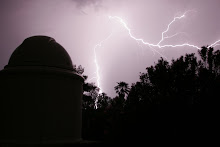Telescope mounts can be finnicky things. Sometimes they work wonderfully, and other times they inexplicably misbehave (reminds me of one of my sons!).
Tonight I'm set up poolside and at first, everything seemed to click into place. I just plunked it down, using a neighbor's tall evergreen to point me approximately North; on my first alignment I was less than 7 arcminutes from the pole in Altitude, and only about 2' in Azimuth. "Ah", I thought, "tonight is going to be one of those nights when everything goes well, so I'll go ahead and refine it to get even closer." But the mount had other ideas. Two frustrating hours later it seemed that I was back where I started.
But once I finally got to imaging, the tracking seemed to be doing very well. Here's a screenshot, I enlarged the tracking graph to show it better. The graph shows guiding errors over about a 12-minute period, and it shows that the tracking was nearly dead-on. The errors are sub-pixel in size, in fact even the largest error was only about 1/3 of a pixel. This is especially good for a mid-range mount such as my CGE (although I have to admit that the wide-field produced by the refractor makes the graph flatter. Still, these errors are sub-arcsecond in size). When I have it on a pier, and refine my PEC curves, I may even be able to improve it further.
Tracking isn't just important for imaging, it also is crucial for a lengthy visual session. The eye can resolve much more detail during a long session when telescope tracking is good. A proper polar alignment goes a long way in helping a scope track targets.

No comments:
Post a Comment